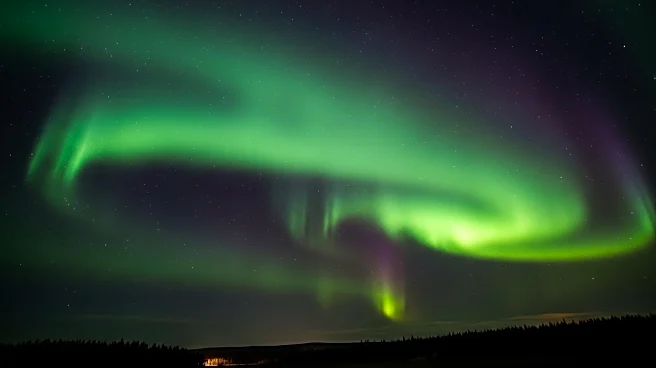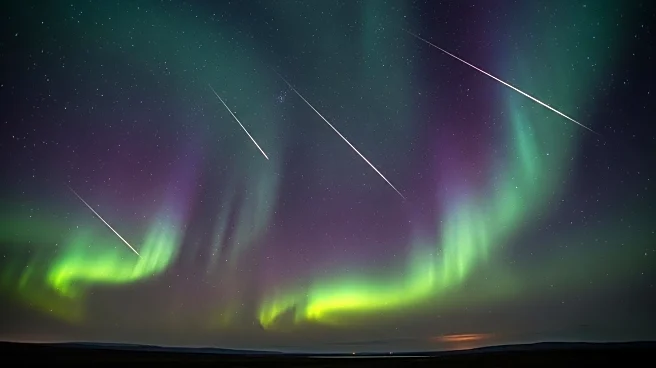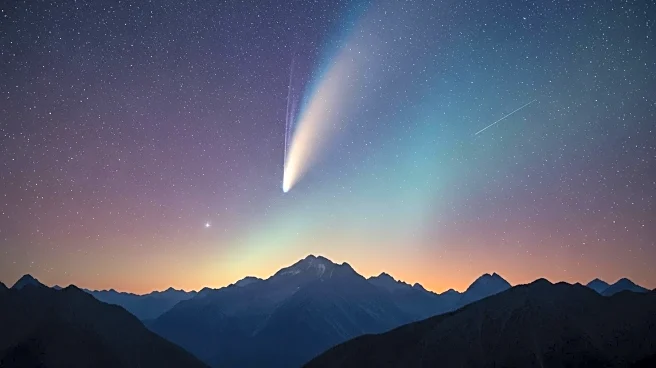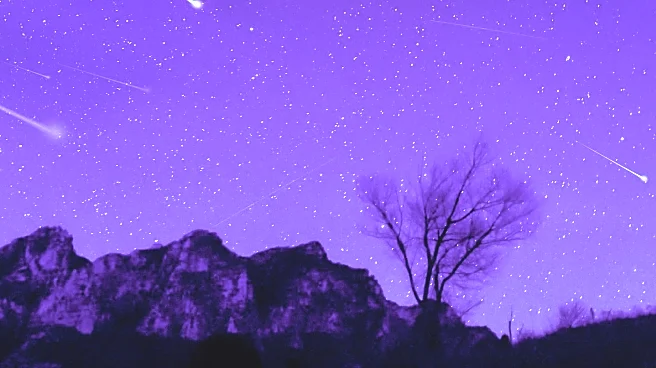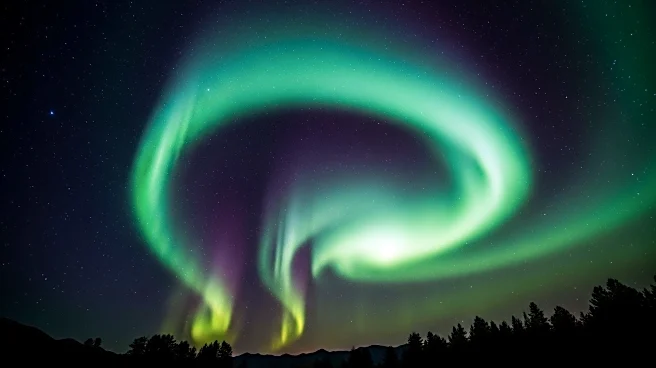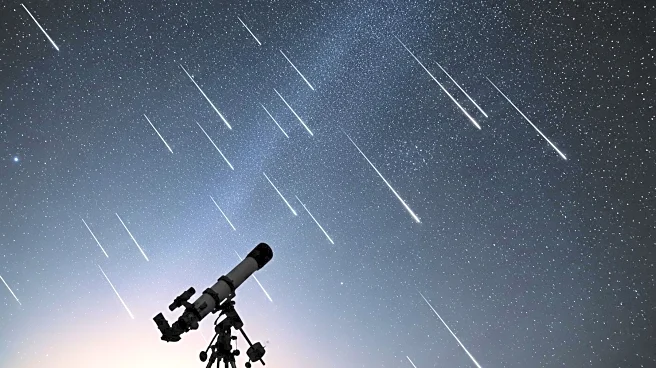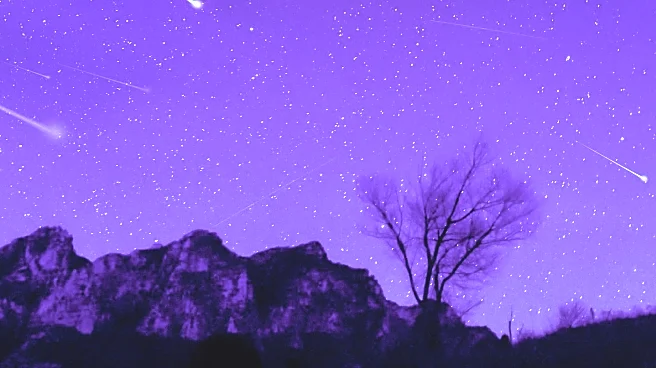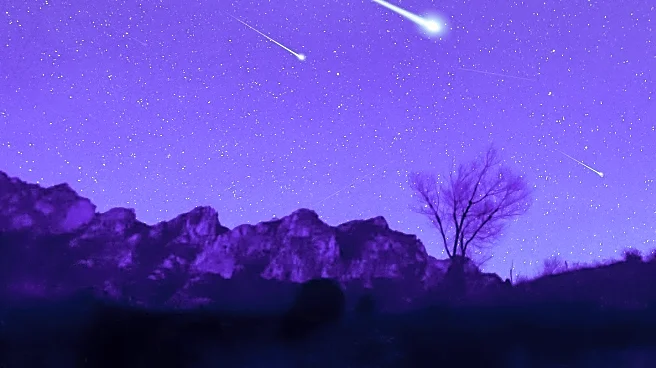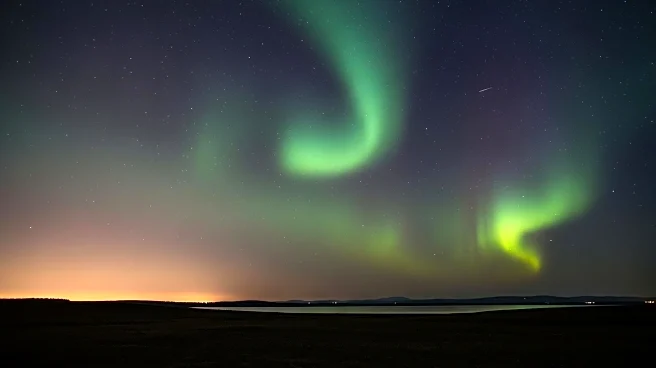What's Happening?
Skywatchers are in for a treat as the Orionid meteor shower begins on October 2, 2025, and will be active until November 12, with a peak expected around October 20-21. The Draconid meteor shower will also be visible, peaking on October 8. Additionally, a strong geomagnetic storm is predicted, which could make the Northern Lights visible at lower latitudes than usual. The full 'Harvest' supermoon on October 6 will be a significant celestial event, appearing larger and brighter than usual. Venus, Saturn, and Jupiter will be visible in the night sky, providing a rich planetary display.
Why It's Important?
These celestial events offer a unique opportunity for both amateur and professional astronomers to observe and study meteor showers and planetary alignments. The potential visibility of the Northern Lights at lower latitudes could attract tourists and skywatchers, boosting local economies in areas where the aurora is visible. The events also provide educational opportunities for schools and science enthusiasts to engage with astronomy and space weather phenomena.
What's Next?
Observers are advised to find dark locations away from city lights to maximize their viewing experience. The peak of the Orionid meteor shower later in the month will likely draw increased attention. The geomagnetic storm's impact on radio communications and power grids will be monitored by NOAA, and further alerts may be issued if conditions change. Space enthusiasts should prepare for the upcoming celestial events by checking local weather forecasts and planning their viewing strategies.

